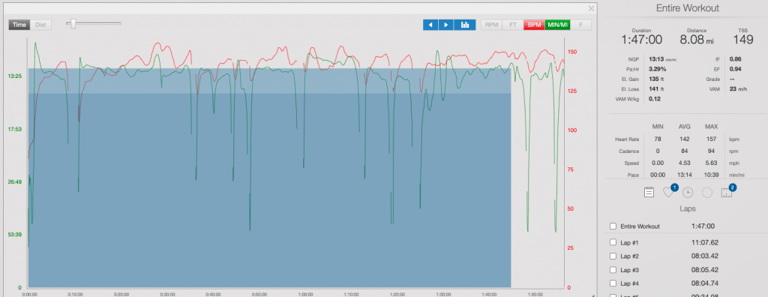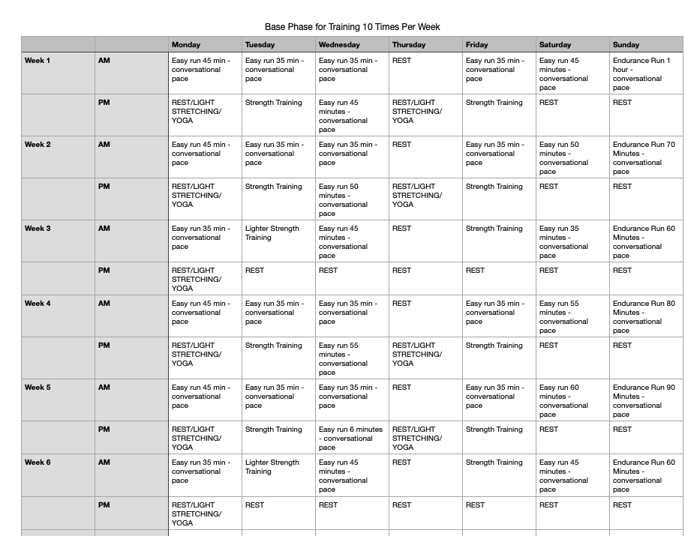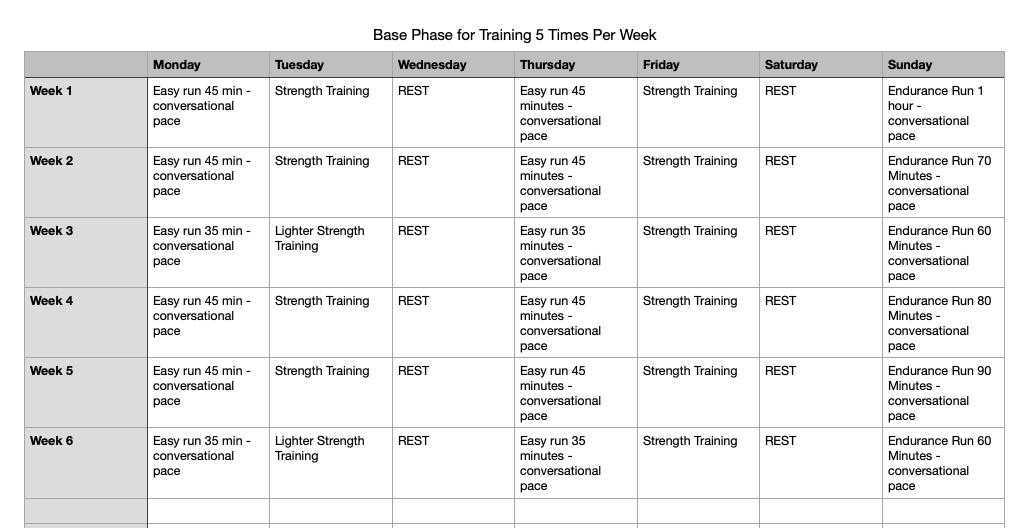What is Base Training and Why Is It Important?

At this time of year I am prescribing a period of base training for a lot of my athletes and I realised that when I first started training I had no idea what base training was.
So what is base training? It’s a cycle of training of at lest 8 weeks which focuses mainly on endurance training, in short this means almost exclusively easy running at a conversational pace with little or no speed. The focus is on extending the longer endurance runs and creating training volume (ie miles/hours training).
For many athletes this can be a really difficult period in their training as they like to go fast; they like the challenge of a tough session and often they are keen to get faster and somehow going slowly doesn’t feel like it will get them very fast.
In actual fact, training at an easy conversational pace will get you faster for a number of reasons:
1) It will improve your efficiency – ie you will be able to go faster at the same perceived effort or heart rate.
2) It will increase your endurance (your aerobic fitness) which will contribute towards shifting your aerobic threshold (see John’s article on Aerobic Threshold here).
3) It provides the BASE from which you can then add in speedier training with less risk of injury.
4) It’s also a great time to enjoy lots of social sessions with friends at an easier pace/intensity.

So why is a Base Phase of Training Important?
The Base Phase of Training is extremely important for any endurance discipline as it trains your aerobic endurance which is what you are mainly going to need to complete your event. Depending on the length of your event and how fit you are when you start you may need more or less base phase training.
When I start to work with an athlete I can quickly assess how much base training they need to do by looking at an endurance workout and seeing how much their heart rate drifts at an easy conversational paced session of an hour or more. When I see a heart rate drift of over 5% on shorter endurance runs I usually reduce or cut out speed work and we begin on what I like to call the ‘patience phase’ of training so that we can build up their aerobic base before adding in any complementary speed work.


As you can see from this athlete’s data, before working with me they were experiencing a lot of heart rate drift, but after a few weeks of focussed easy running their heart rate drift was massively improved.
Too Much Speed is Risky
The body can only support a small amount of speedier training; do too much and you risk over-training and injury. As you enter into the build phase of any training plan there will generally be some (more) speed work added which raises the levels of the stress hormone cortisol in your body; high variation with little or no return to base levels of this hormone has been shown to increase the risk of burn-out in elite swimmers (Lemyre, 2005). Put simply your body can’t sustain all year round intense speed work and what will tend to happen is your body will become over-tired and over-trained – net result you are slower than when you started, or you may have to stop altogether for a long period of time.
To manage this we need to keep the build phase of training just long enough to make the fitness gains needed for our specific event and to gain as much fitness as we can from the less stressful type of exercise.
Even as you leave the base phase of training and enter into a build phase where you may be focussing on some event specific speed work, you will still need to keep most of your sessions (80%) at this easy conversational pace.
Strength Training

Another important aspect of the base phase of training is it gives you an opportunity to focus on some strength training.
Strength training is a great way to focus in winter months as outdoors can be less accessible at this time of year.
A focussed period of strength training up to 3 times per week can make a massive difference to your performance later in the year as you can:
- Focus and work on any muscular imbalances you may have
- Build some good core strength
- Build strength around weaker joints
- Build functional strength (by imitating the movements and strengthening the muscles used for your particular discipline).
What does the base phase look like?
The length and structure of your base phase of training will vary depending on how aerobically fit you are and the event you are wanting to complete. For ultras and multi-stage events you may have many many weeks in base phase unless you are already carrying a lot of aerobic endurance from a previous block of training.
Some coaches will always keep some speed work in every phase of training, even base phase. I prefer to have some weeks with no speed at all as it can mark a gradual reintroduction to training after some time off. Depending on the fitness level of the athlete will depend when I introduce faster paced workouts and how I do so.
A typical base phase of training for an running athlete, who normally training 5 times per week and is starting the base phase after a break at the end of the season may look something like this:

As you can see the main change is that the long run extends gradually week by week. For a cyclist or for cycling sessions within a plan the main principles would remain the same but the sessions might be longer. Even in this phase I keep the third week easier to allow for some adaptation.
For someone who generally trains up to 10 times per week it might look more like this:

In either case the base phase may need to be extended for up to three times this length so that the long run(s) can be extended to match more closely the demands of the event and/or to provide more time for injury rehabilitation if it is needed. As the phase is extended it is likely that some speed/hill work would be added to the weekly plan as needed and as the athlete was able.
Additional Questions
Am I still Getting Fitter in the Base Phase of Training?
If you are disciplined enough to do a good base phase of easy running you will get fitter and getting fitter in your easy zone will to a certain extent push your other training zones up.
What happens if I miss a lot of my base phase training?
If for some reason you miss a lot of base phase training the best thing to do is go back a few weeks and start from there to complete as much of the base phase as possible; if you try to begin the build before you are aerobically fit enough this will compromise your overall race results and you risk injury.
When should I do base phase training?
Traditionally this phase of training has been done in the winter months before entering a build phase where the training might become more race specific. This way it can lay the foundation for the speed work that is to come. That said, for ultra distance off road events, getting out in the winter months for long endurance days can be difficult and for this reason some training plans would include this type of training later in the year.
January 12, 2022

Comments